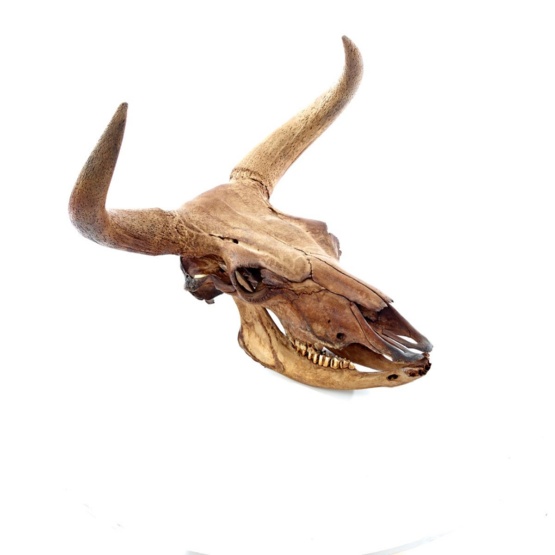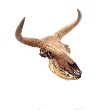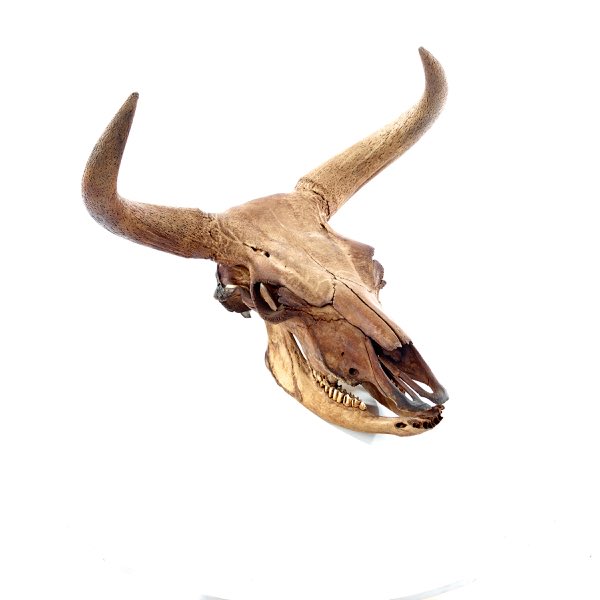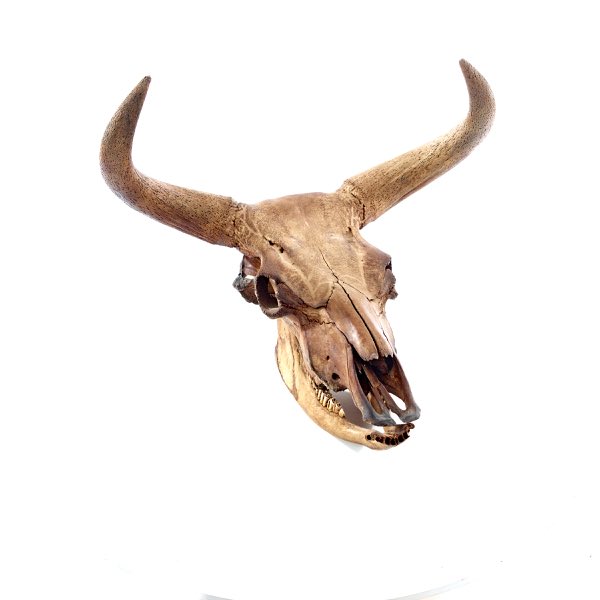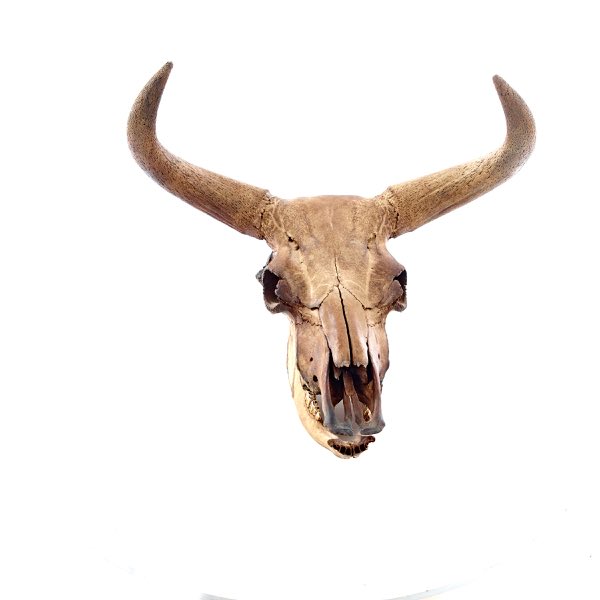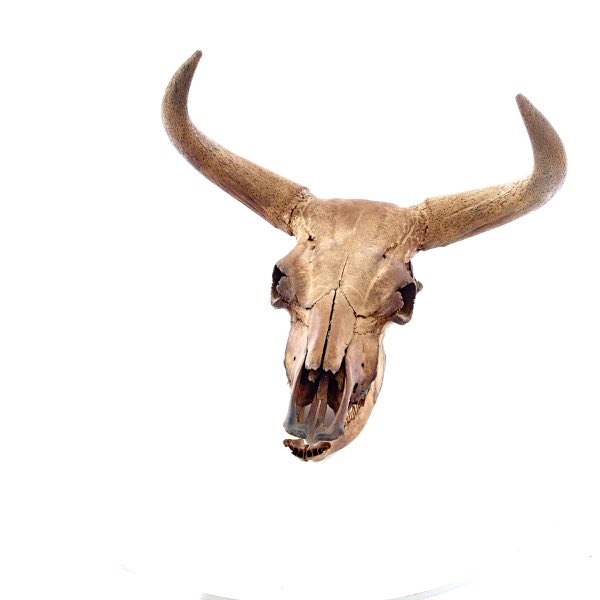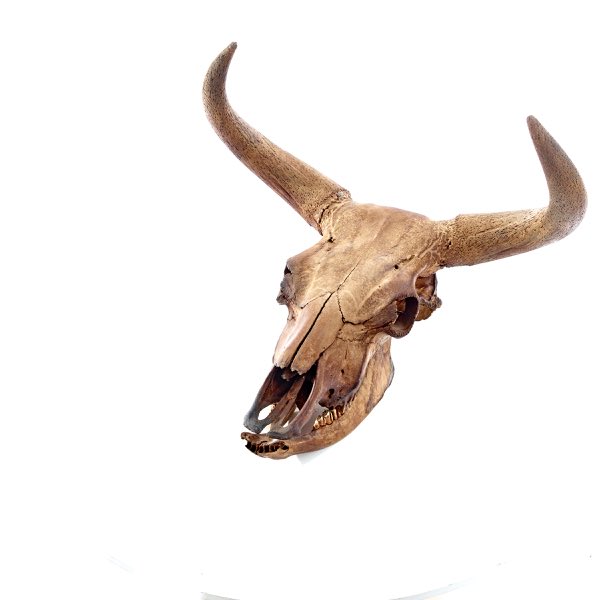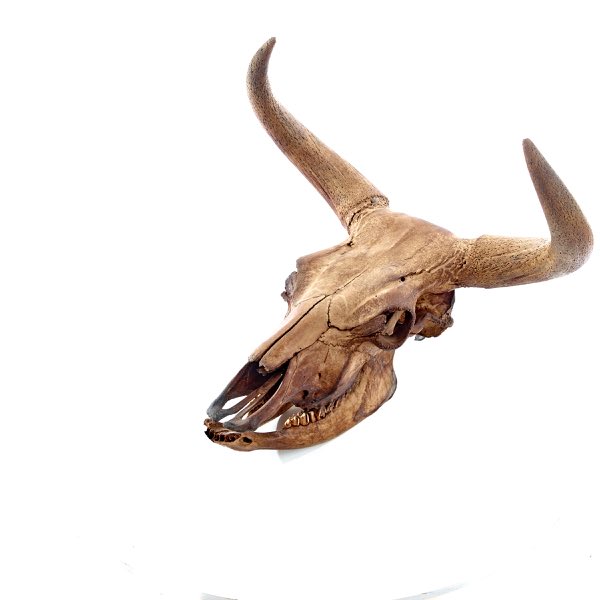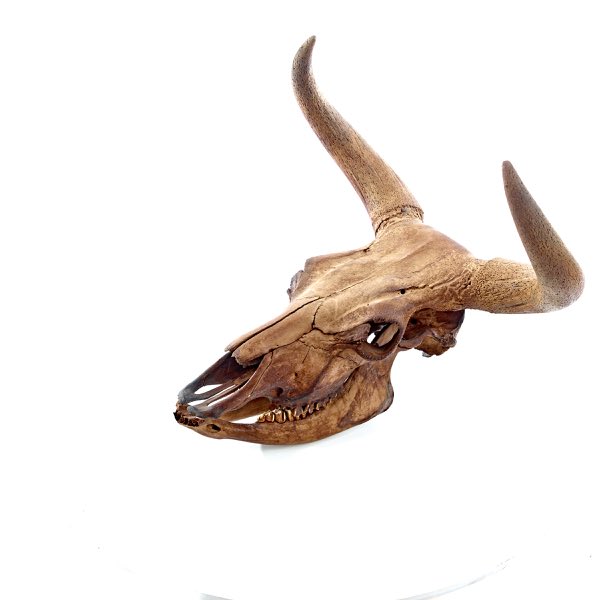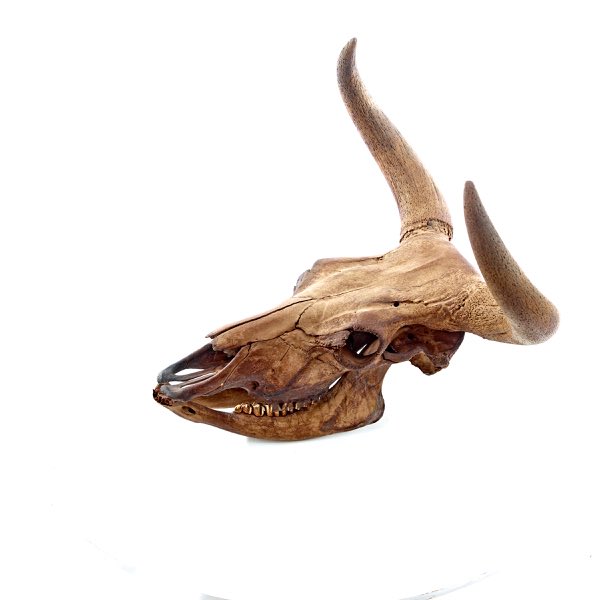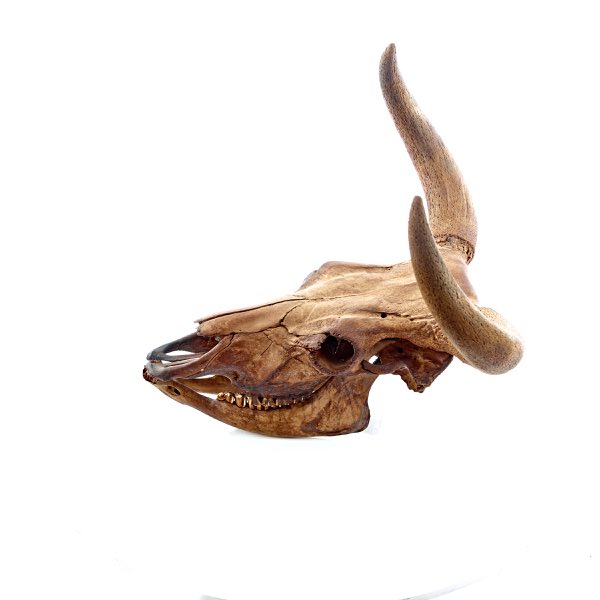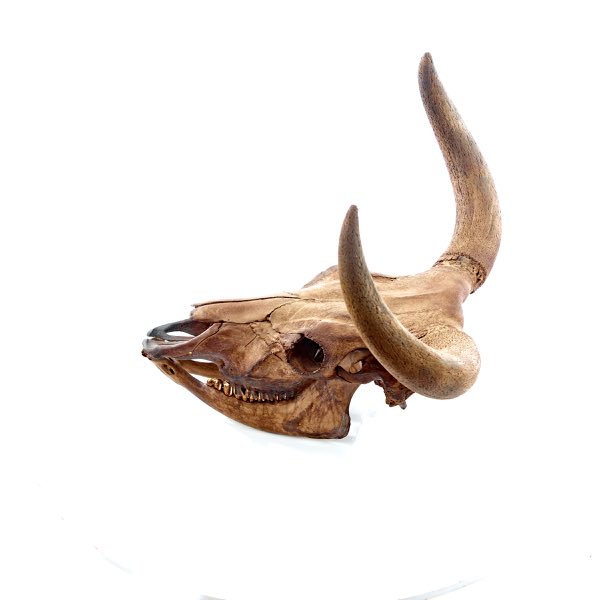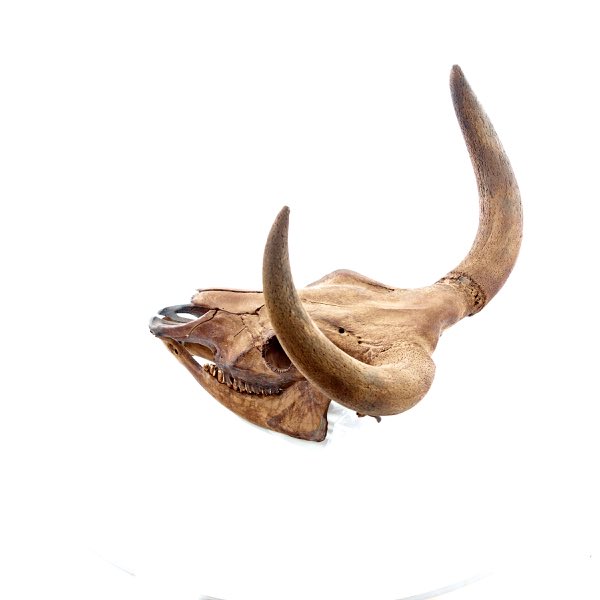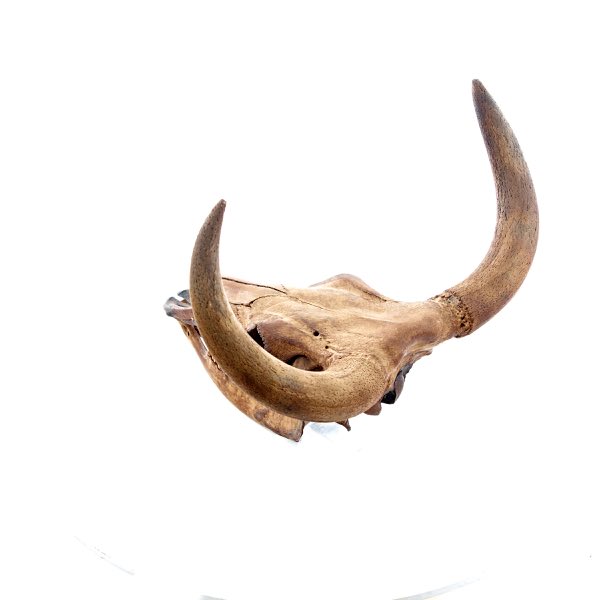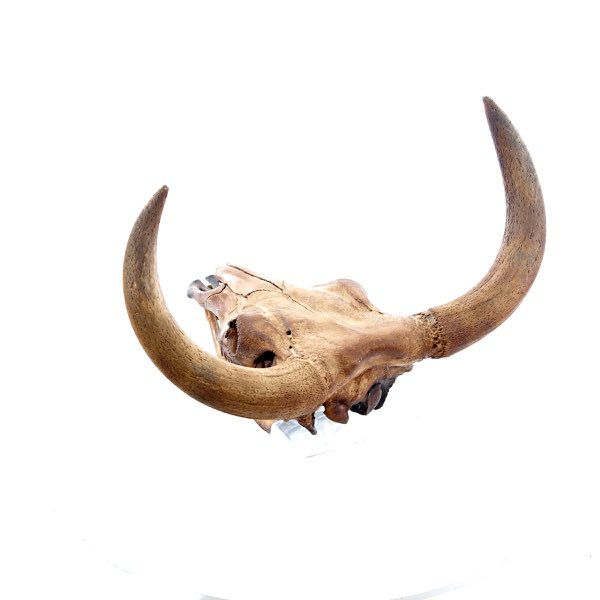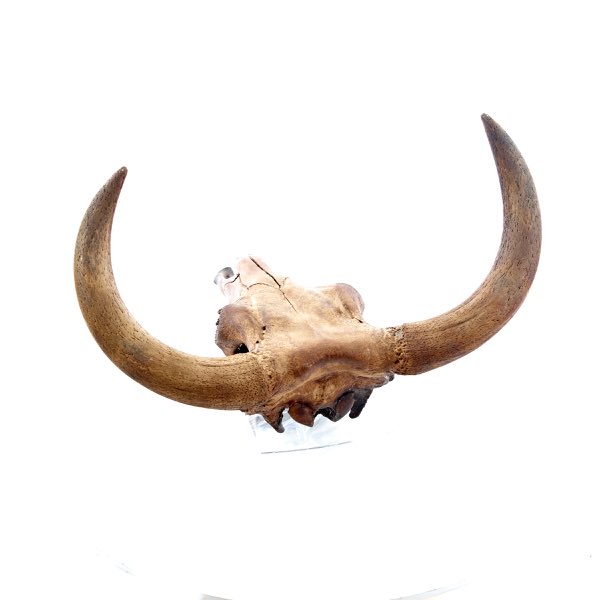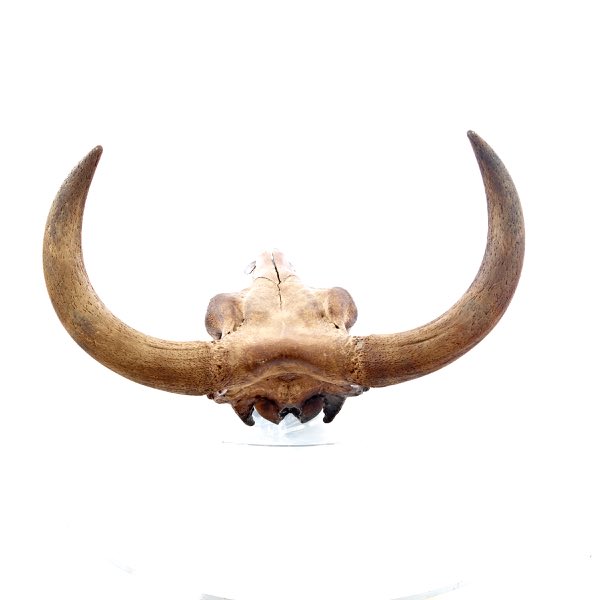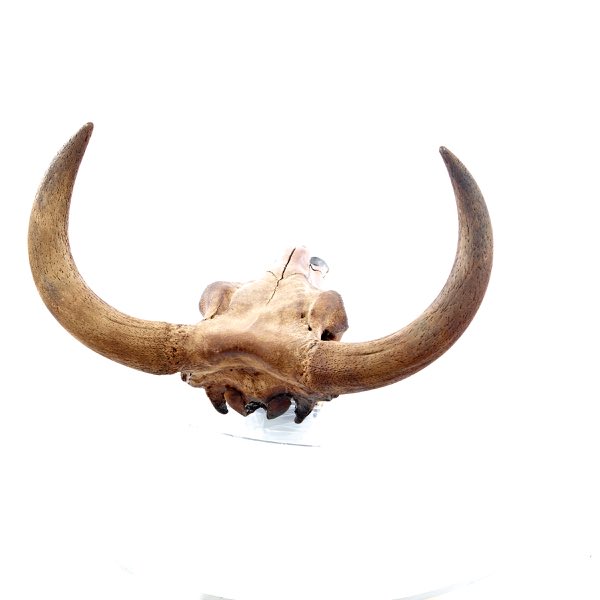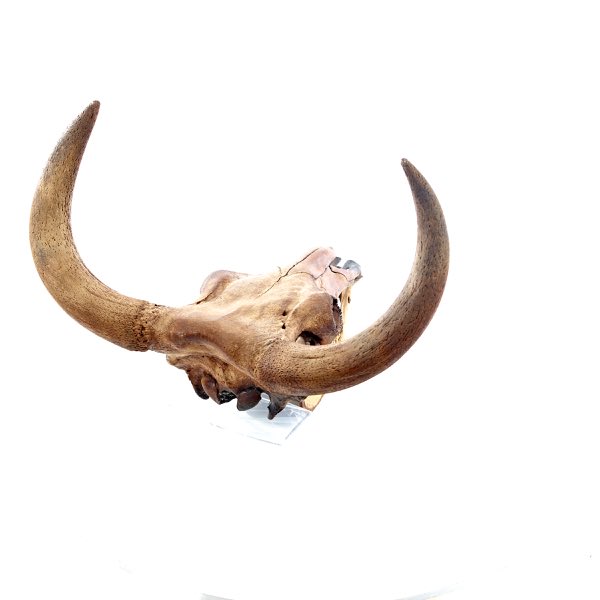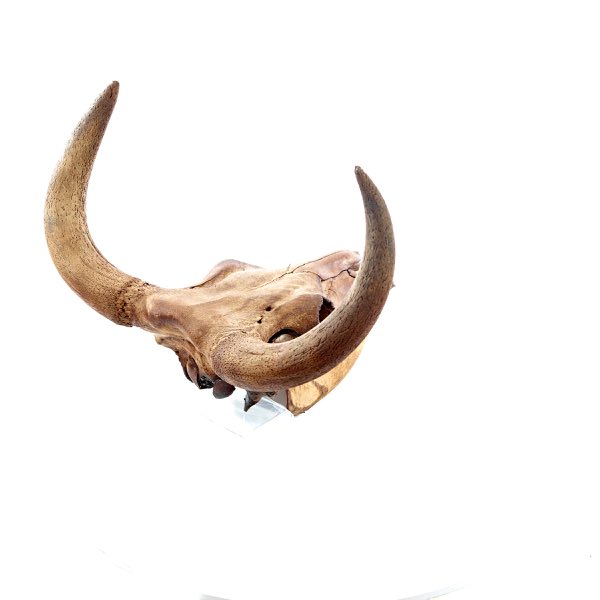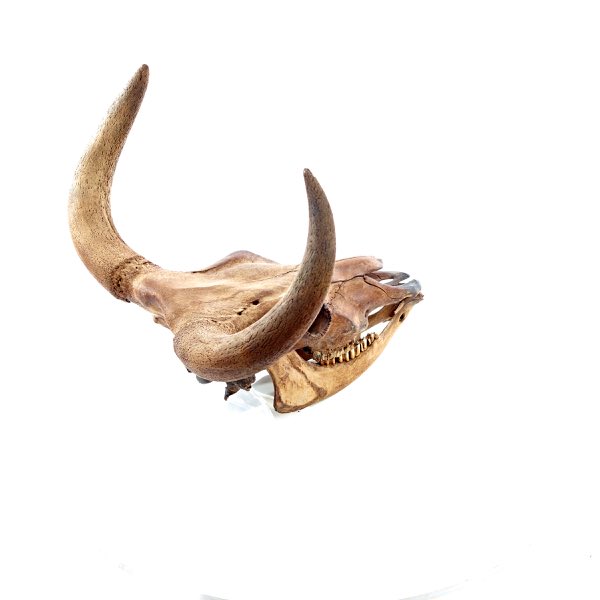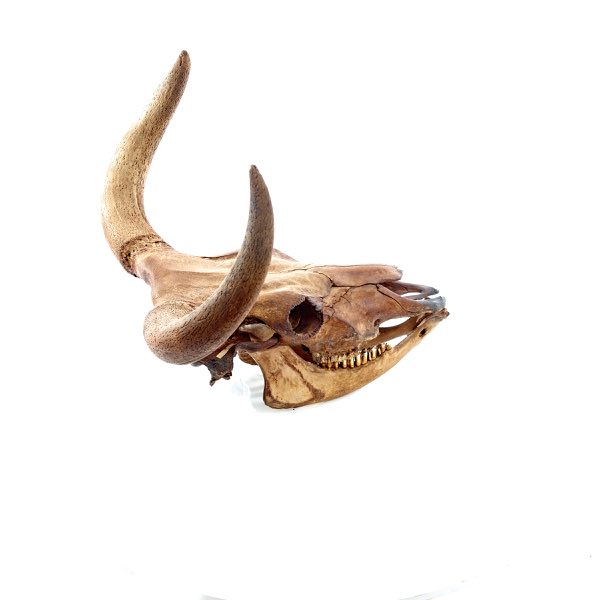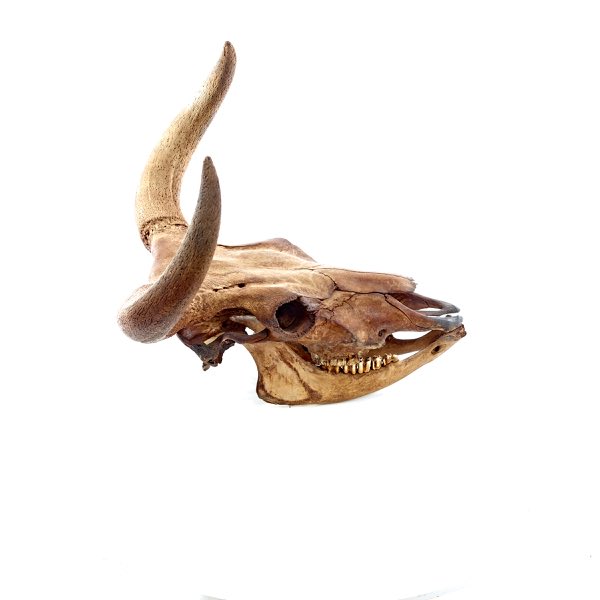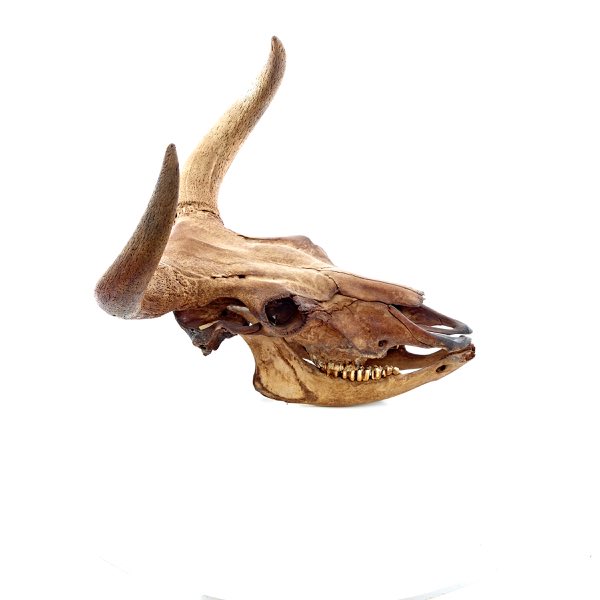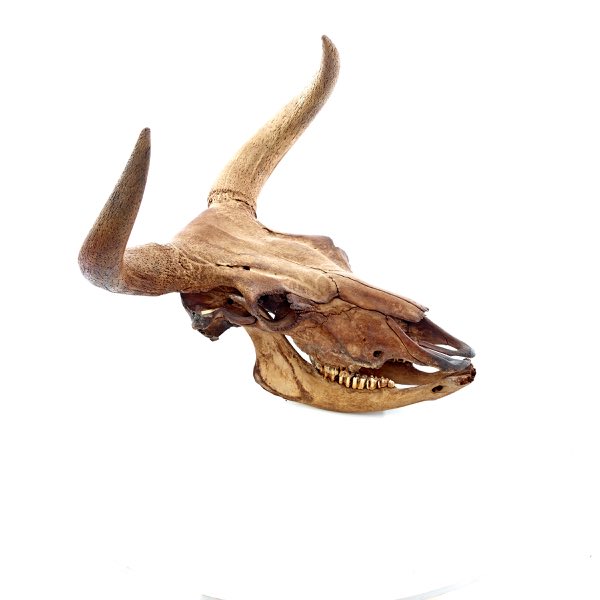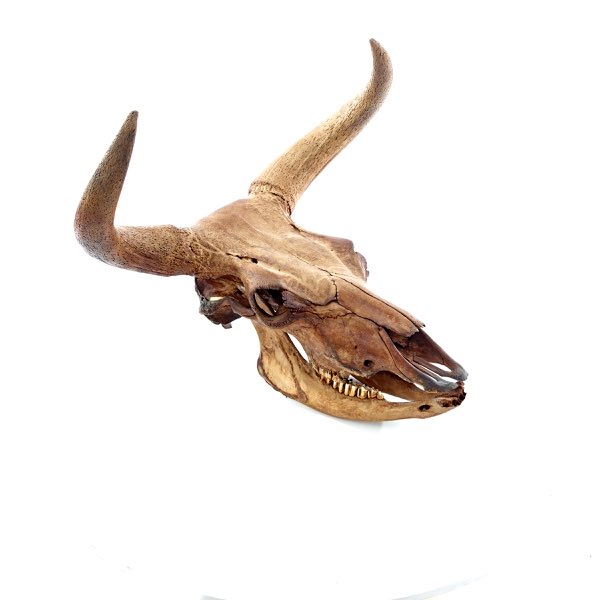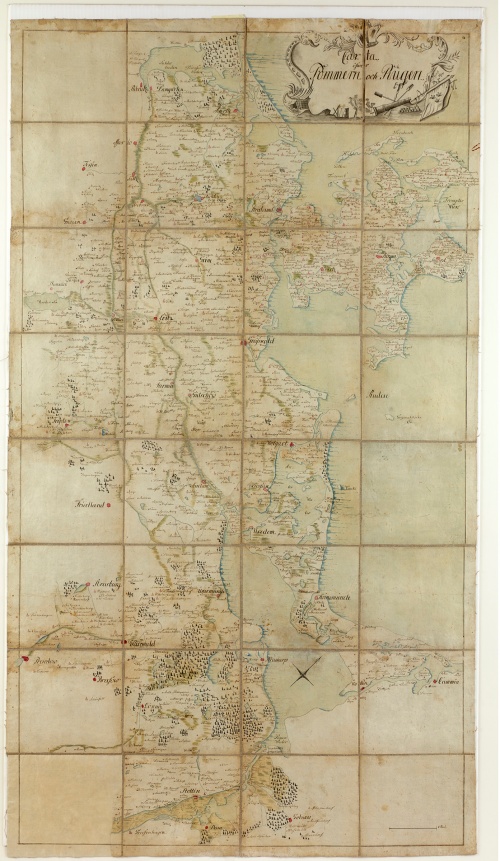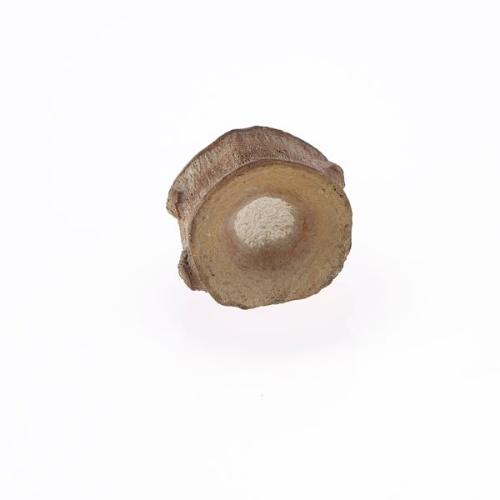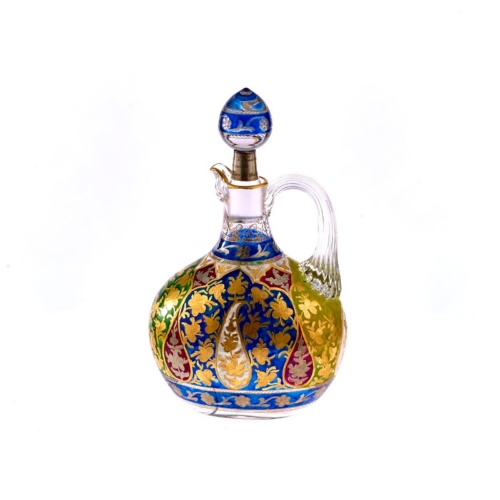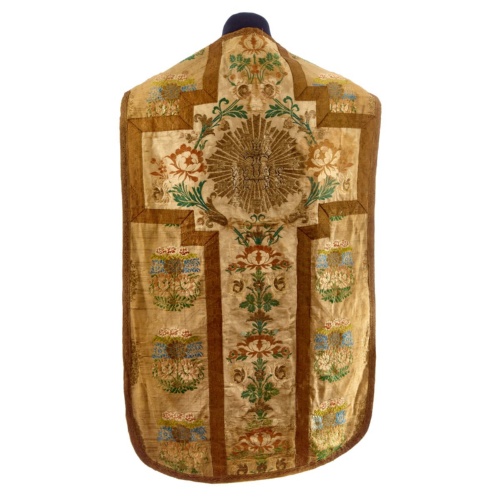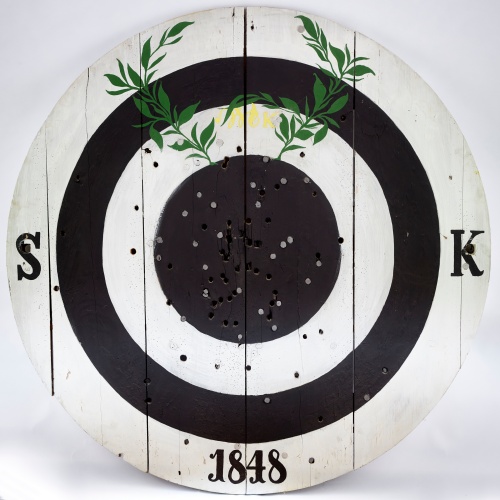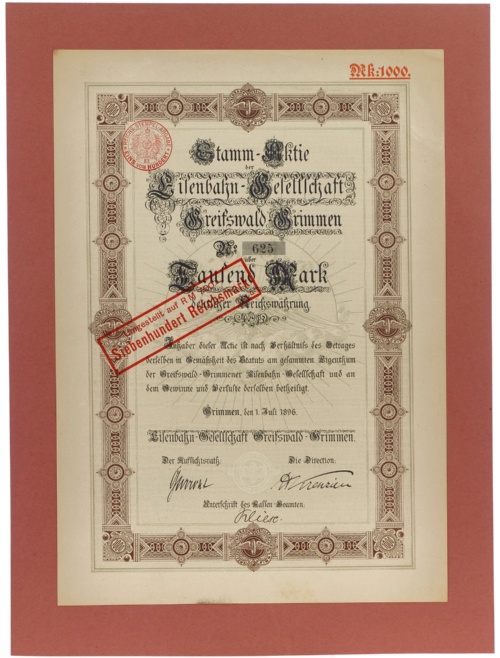Auroch skull lat. Bos primegenius
- discovered in the northern part of the Ibitzgraben near Grimmen;
bone with teeth,
13th century B.C. Bronze Age;
length: 110 cm, horn span: 80 cm
Dredger operator Hans-Jürgen Rogge discovers the remains of the bones in the swampy trench during land improvement work on 29 June 1989. The bones are the horned section of an animal skull. Gerhard and Helmhold Strübing find the lower jaw with all its teeth, the rotation vertebra and seven cervical vertebrae of a wild bull during subsequent excavations on 8 July. No other remains of the animal's skeleton are found.
Aurochs are among the 'original denizens in the fauna of Pomerania'. They migrated to the region roughly 11,500 years ago from the south, toward the end of the last ice age. Although large, they are popular hunting game, leading to their extinction in Germany by the middle of the 16th century.
The skull is over 3,000 years old; carbon dating places it in the Bronze Age. The large bull died at the age of around four years with a live weight likely to have been 1,500 kg.
It is not possible to tell whether the remains are of a hunted animal that escaped its Bronze Age hunters and then succumbed to its injuries on the moor. The skull and the vertebrae show no signs of injury.
Text: S.F.
